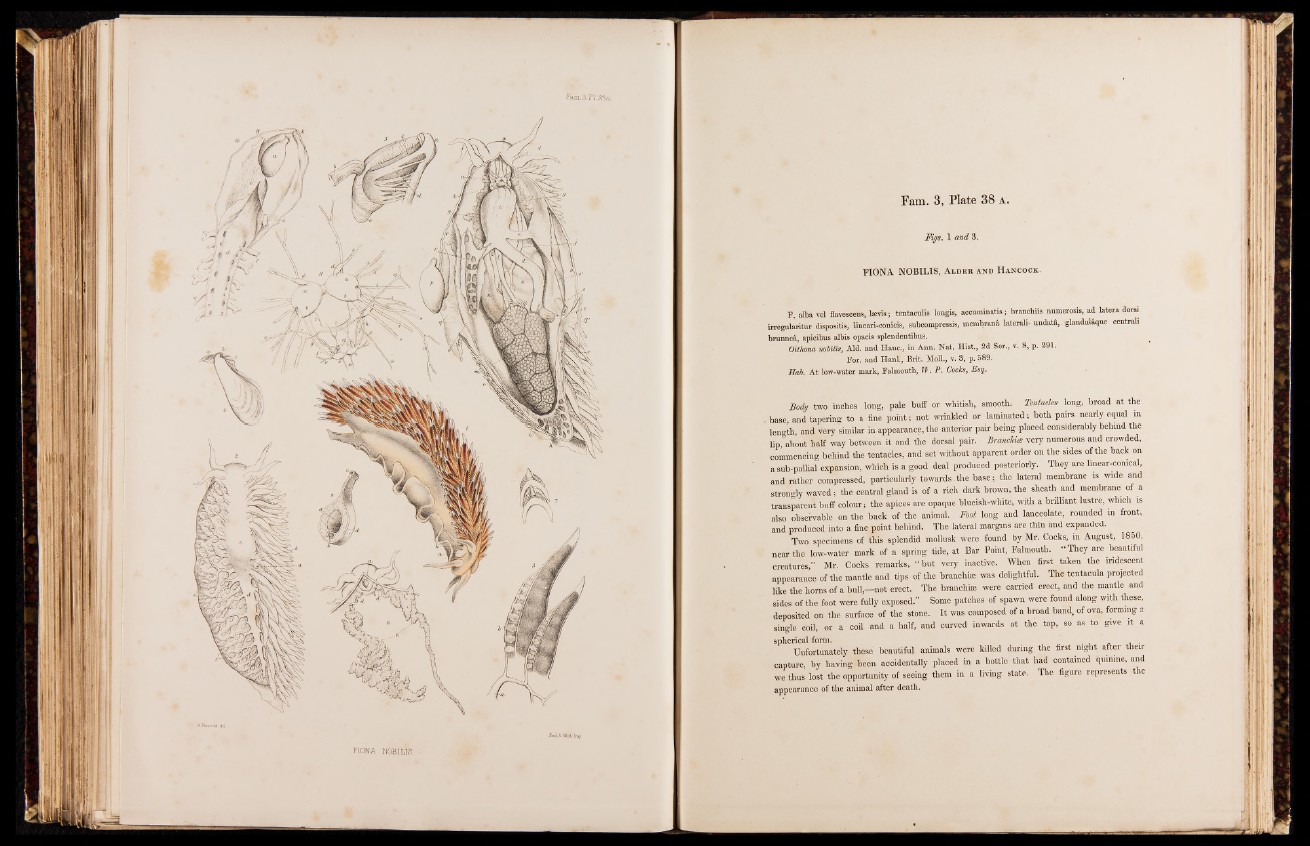
Fam.3Pl.30a..
fW.* VfcUmp
FIONA NOBILIS.
Figs. 1 and 3.
FIONA NOBILIS, A l d e r a n d H a n c o c k .
F, alba vel flavescens, liey»; tentaculis longis, accuminatis; branchiis numerosis, ad latera dorsi
irregularitur dispositis, lineari-conicis, subcompressis, membran& laterali- undat&, glandul&que centrali
brunneft, apicibus albis opacis splendentibus.
Oithona nobilis, Aid. and Hanc., in Ann. Nat. Hist., 2d Ser., v. 8, p. 291.
For. and Hanl., Brit. Moll., v. 3, p. 589.
Hab. At low-water mark, Falmouth, J f. P. Cocks, Esq.
Body two inches long, pale buff or whitish, smooth. Tentacles long, broad at the'
base, and tapering to a fine point; not wrinkled or laminated; both pairs nearly equal in
length, and very similar in appearance, the anterior pair being placed considerably behind the
lip, about half way between it and the dorsal pair. Branchue very numerous and crowded,
behind the tentacles, and set without apparent order on the sides of the back on
a sub-pallial expansion, which is a good deal produced posteriorly. They are linear-conical,
and rather compressed, particularly towards.the base; the lateral membrane is wide and
strongly waved; the central gland is of a rich dark brown, the sheath and membrane of a
transparent buff colour; the apices are opaque blueish-white, with a brilliant lustre, which is
also observable on the back of the animal. Foot long and lanceolate, rounded in front,
and produced into a fine point behind. The lateral margins are thin and expanded.
Two specimens of this splendid mollusk were found by Mr. Cocks, in August, 1850,
near the low-water mark of a spring tide, at Bar Point, Falmouth. “ They are beautiful
creatures,” Mr. Cocks remarks, “ but very inactive. When first taken the iridescent
appearance of the mantle and tips of the branchial was delightful. TKe tcntacula projected
like the horns of a hull,—not erect. The branchiae were carried erect, and the mantle and
sides of the foot were fully exposed.” Some patches of spawn were found along with these,
deposited on the surface of the stone. It was composed of a broad band, of ova, forming a
single coil, or a coil and a half, and curved inwards at the top, so as to give it a
spherical form. .
Unfortunately these beautiful animals were killed during the first night after their
capture, by having been accidentally placed in a bottle that had contained quinine, and
we thus lost the opportunity of seeing them in a living state. The figure represents the
appearance of the animal after death.